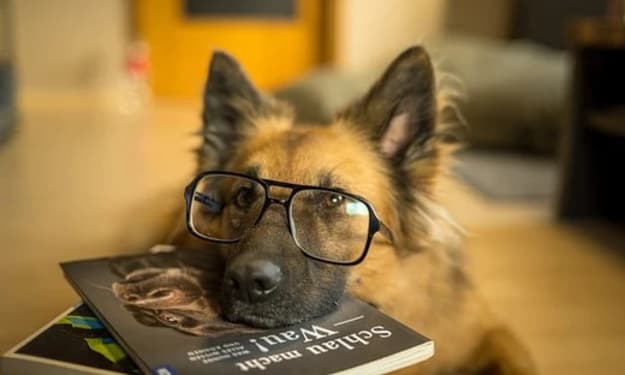What Pet Portrait Artists See During a Session
Pet Portrait Artist

When it comes to painting/sketching a moving dog, there are a few things that happen that can make it more challenging. One of the main challenges is the proportion of the dog's head compared to their body. A posed dog will give you an idea of where the front and back legs should be, but with a moving dog, it can be difficult to determine which way they're going to turn at any given time. Also remember that it's best not to be too detailed when painting/sketching a moving animal because they aren't going to stay still long enough for you to get everything perfect!
Another challenge is getting all those little details right - fur texture and facial expression are especially important here! If your subject doesn't sit still long enough for you paint without interruption (which can take hours), then just try doing some quick sketches instead!
The differences between painting a dog in good lighting vs painting a dog in poor lighting.
The difference between painting a dog in good lighting vs painting a dog in poor lighting is dramatic. In this blog, I'll show you why and how light affects the appearance of your paintings.
Lighting can make or break a portrait. It is the single most important element to consider when painting any subject matter, whether it's humans or animals. The way light hits your subject will help determine how they look on the final canvas—whether they appear dark and sinister or bright and happy! A few basic rules apply:
Light needs to be consistent across the whole painting (don't leave one side of their face in shadow)
Light should complement each individual's features (bronze-colored fur needs warm tones; white fur needs cool tones)
The challenges of painting other animals, like cats, rabbits and birds.
Painting cats is a lot harder than painting dogs. Cat owners might think that their cats would be more willing to sit still and pose for their portrait, but this is not always the case. Sometimes they are even less cooperative than dogs!
Cats are skittish and don’t follow commands like dogs do. They also don’t like wearing clothes or sitting in one place for long periods of time (especially if there is an open window nearby). If your cat enjoys being outdoors or has been trained to come when called by name, it can be even harder to catch him when you need him most!
What the artist is looking at when they paint - the details that people don't notice on their own pets.
As a pet portrait artist, I'm always looking for the details that most people don't notice about their own pets. For example:
The colour of their eyes. Some dogs have brown eyes, some blue and others green. If you are trying to paint your dog's portrait from a photograph, it can be difficult to get the exact shade of your dog's eyes right if they're not looking directly into the camera!
The shape of their nose - because many breeds have different kinds of noses depending on what part of the world they came from (e.g., Bulldogs were bred in England so they tend to have short snouts.)
The shape of their face - some dogs are bred with longer faces than others; this is especially true with smaller breeds like Chihuahuas and Pomeranians whose faces tend to look long compared with larger breeds like German Shepherds who often have shorter muzzles (the area between where an animal's nose meets its mouth).
How to get a pet to pose (hint: it's much easier with small dogs vs large ones!).
Finding the right pose for your pet can be a challenge. Here are some tips that will help:
Use treats. Have some of your pet’s favorite treats on hand, or have your assistant carry them in a treat bag to help get them in position and keep them there for as long as you need. If it’s only one or two bites, it’ll be worth it!
Let them use their toy(s). Most dogs love toys, so let them pick out a favorite and then use that to get their head turned toward you so you can capture his/her gaze just right. It might take some time to get this right, but I promise—it will be worth it!
Take breaks if necessary. If your subject gets bored or tired after 5 minutes (or less), take a break and come back later when they are ready to go again--but don't wait too long before trying again - once they've lost interest completely it may take days before they'll want another shot at posing!
Pet portrait artists work hard to capture your pets exact likeness.
Pet portrait artists work hard to capture your pets exact likeness, but there are challenges that they face when painting other animals. Birds and rabbits have a similar problem as dogs in terms of being difficult to paint in poor lighting conditions. Cats can be particularly challenging because their fur is so dense and may obscure details, making them difficult to capture accurately on canvas or wood panel. However, there are some ways you can help your pet portrait artist achieve the best results possible:
Make sure you have good lighting when photographing your pet for reference images for the artist (see our blog post on "How Pet Portrait Artists Work").
Avoid using flash photography because it tends to wash out colors and makes it harder for artists to see details clearly. If it's not possible using natural light then try doing a photo session with a diffuser over one side of the camera lens or bounce flash off walls/ceiling/floor etc...
About the Creator
Portrait My Pet
Portrait My Pet Blog, we consider our furry companions as family members. Whether you're a pet owner or embarking on the exciting journey of pet parenthood for the first time, our blog is your trusted source for all things pet related.






Comments
There are no comments for this story
Be the first to respond and start the conversation.